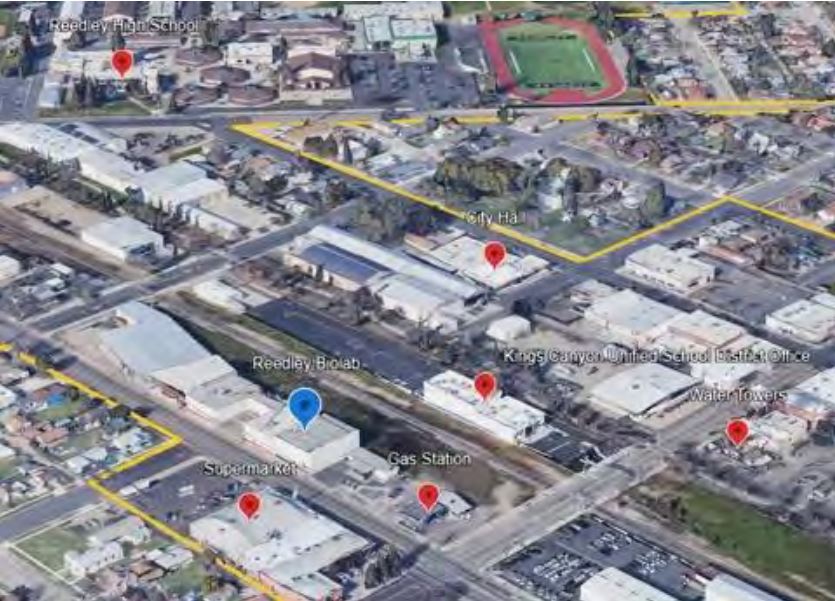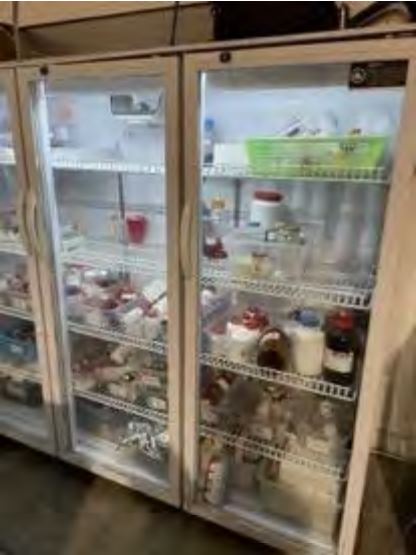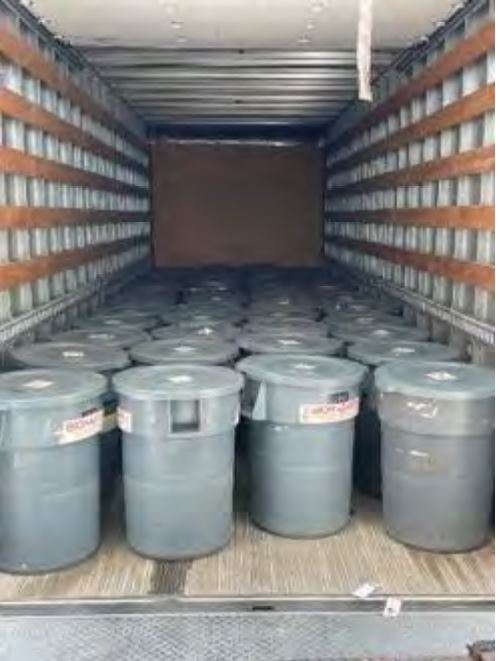
A Code Enforcement Officer Discovered an Illegal Biosafety Lab and Fought Tirelessly to Clean Up the Mess
By investigating a simple code violation, a senior code enforcement officer uncovered an illegal biosafety lab that included viruses, blood and hundreds of mice.
This article is Part 3 of a three-part series exploring the roles of code enforcement officers. To read Part 1, click here. To read Part 2, click here.
Few would expect to find an illegal biosafety lab in their own neighborhood, but that’s exactly what Jesalyn Harper, Senior Code Enforcement Officer for the City of Reedley, California, found in December 2022.

Harper was there to investigate after residents reported that cars were being parked in a lot for a vacant warehouse that was built in the 1950s. She assumed that this was little more than a permitting issue; she thought that someone had purchased the property and simply failed to get the proper permits. But while perusing the environment, she noticed that a garden hose was sticking out of the wall, an obvious code violation. She didn’t smell marijuana, but it was clear someone needed water for whatever they were doing inside. At one point she wondered if the building had been converted to housing.
Inside, Harper discovered something entirely different: bags of used COVID-19 tests, several refrigerators (one was labeled “blood,” another had glass beakers full of urine) and hundreds of mice. The hose that brought her there was being used to provide drinking water to the mice, but at this point Harper still didn’t know exactly what she had stumbled upon. She was determined to find out.
Instead of filing a report and calling it a day, Harper reached out to every agency she could think of, including the Federal Bureau of Investigation (FBI). There was a lot of red tape and a lot of back and forth, but she didn’t give up and eventually joined the Health Department and Department of Toxic Substance Control to investigate the entire building.
“I noticed there was this freezer set at negative 80 degrees,” said Harper. She Googled it and quickly found that, per the Centers for Disease Control and Prevention (CDC), active viruses should be stored at negative 80 degrees to keep them dormant.

“It was at that moment during inspection that we realized there were viruses on the property and in the building,” Harper recalled. “This was some type of biosafety lab that they had been operating at one point in time, and they were storing it in Reedley.”
COVID-19, malaria and E. coli were among the viruses found and later identified at the lab.
Solving a Problem They Didn’t Know They Had
After realizing what she had uncovered, Harper wanted to rectify the problem as quickly and safely as possible. She turned to the building codes first and considered shutting off the power.
On paper, this was a sound option since the building had been rewired to power all of the refrigerators and freezers. But in an environment with dormant viruses, it wasn’t that simple.
“Our issue was, if we shut everything off, all of those viruses would start to defrost!” Harper added. “We made the decision that we would keep the power on in the cold storage room that had all the viruses. But we would shut off the electricity to the rest of the building and property. And we would post the property ‘unsafe to occupy’ so that no one could go back in there without approval from code enforcement.”
“Going forward, one of the concerns was, who’s going to find these labs?” Harper questioned. “More than likely it’s going to be people going into homes and warehouses – it’s going to be code enforcement officers, building officials, inspectors and fire prevention officers.” Recognizing the need for additional, specialized education, Harper worked with her U.S. Representative Jim Costa on H.R. 9305, which would provide training resources to ensure building safety professionals will be better prepared to deal with potential biosafety hazards.
Inspired by the incident, in April 2025, Congressman Costa introduced the Safety Training for Officers on Public Health Threats Act (STOP Health Threats Act), a bipartisan bill aimed at equipping local law enforcement officers with the training and tools necessary to identify and respond to public health threats stemming from building code violations.
In support of this bill, International Code Council Chief Executive Officer John Belcik shared, “Code enforcement officers play a crucial role in safeguarding our communities by ensuring buildings and facilities adhere to safety standards. The International Code Council commends Congressman Costa for introducing the STOP Health Threats Act, which would augment training for these public servants to ensure they are best equipped to identify and mitigate public health threats arising from building code violations.” Read more here.
“There’s still a lot more work to be done, but this is the first steppingstone in getting something on the books to protect the United States,” Harper affirmed. “We’re no longer just talking about protecting Reedley – we want to make sure the Reedley incident doesn’t happen anywhere else ever again.”

Teaching Others How to Respond to Future Biosafety Incidents
To minimize the risk of future incidents and prepare for any that may occur, Harper has been working with both the Federal Government and the Fresno County Public Health Department. The latter has created an infectious disease ordinance that requires all labs working in Fresno to report to and register with the Public Health Department. Going forward, all biosafety labs will be subject to annual inspections. They must also report the number of staff working at the site so that if there’s a leak, the appropriate authorities will know how many people may have been in the building at the time.
Harper also created and has been teaching a curriculum for how to respond if and when an illegal biosafety lab is discovered.
“I’ve put together a curriculum of not only how to identify if it’s a biosafety lab but how to protect yourself,” said Harper. “What do you need to do if you find this? There was nothing in the books on how to handle this situation previously. I didn’t know what a biosafety lab was, I couldn’t tell you what a biosafety cabinet was. I wanted to fill those gaps, and I also wanted to make sure we were protecting ourselves.”
Harper also wanted to ensure that inspectors and code enforcement officers are prepared for the mental health effects that may follow a biosafety discovery.
“Once you find the lab, what do you do? You call your supervisor and let them know what’s going on because you need to open a worker’s comp claim immediately because we don’t know what you’ve potentially been exposed to,” Harper added. “Until you’ve gone through bloodwork testing, you don’t know.”
“This psychological trauma can follow you home from work. How do you address it?” Harper questioned.
Harper hopes her curriculum helps others in the future, but she also wants everyone in the field to remember how important their job is, and how even the smallest violation should not be overlooked.
“That is the thing I try to explain to everyone in the field – that the most basic, simple violation led to this,” she concluded. “It shows our value because we’re out there on the frontlines just as much as police officers and fire department personnel. We’re going in homes and warehouses. We’ve got to be trained on what to look for to be able to help.”
For more information on the Reedley investigation, click here.
Subscribe to the BSJ Weekly newsletter, here.






